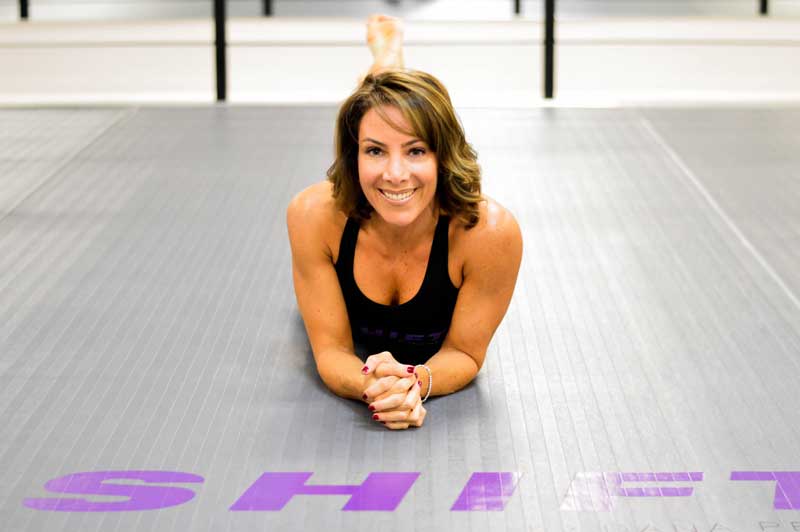If you are a woman in your 40’s, you may find that fitness is a whole new ball game, changes in our hormones wreak havoc on workout and diet regimens that have been working for years. Add to that bone density loss and pain from arthritis and old injuries and we really have to start rethinking how to maintain the same fitness level while we make changes to our routines.
Estrogen, progesterone and testosterone begin to decline in our early forties with the onset of peri-meopause, causing new or increased cravings, loss of energy, changes in sleep habits and metabolism. The trick to managing these changes is not to eat less, exercise more as it often doesn’t work and can cause the kind of frustration that leads to abandoning an exercise regime entirely. Instead, you need to work smarter not harder.
One way to battle changing metabolism is to build more muscle mass, as muscle tissue burns calories even while at rest. Focus on core strength with squats, dead lifts, push ups and pull ups using resistance with bands or a comfortable weight. Cardio is also essential not just for calorie burn but for maintaining a healthy heart and lungs. However, life long runners and bikers may find it more difficult to stay fit with their chosen sport as they get older. Long distances can be harder on your body and increase stress hormones, which is counter productive to both health and fat loss. Instead, short bouts of high intensity work outs or longer but less intense sessions of walking or cycling produce less stress with a comparable calorie burn.
As we age, we are more susceptible to injury and slower to recover. Make sure that when starting a new fitness program you are pacing yourself and not overworking your muscles. Also, give yourself plenty of time to recover between strength training workouts by alternating your cardio and strength days and keeping track of when you work each muscle group. Sleep is also very important as this is when your muscles rebuild and recover, people who get less than 6 hours of sleep per night often have a harder time maintaining their fitness level.
Injuries can happen to anyone at any age but we become more vulnerable to certain types of injuries in our 40’s, cartilage, tendons and ligaments become less elastic which can lead to more sprains and strains. Stretching can help, staying flexible helps maintain ease of movement and agility. Also, listen to your body and if you feel pain, slow down or take a break.
Avoiding injuries and maintaining fitness in general boils down to one word, consistency. Find a regimen that works for you, whether that is solo hiking or a group fitness environment, and surround yourself with positive people who support your goals and want to keep you healthy.

